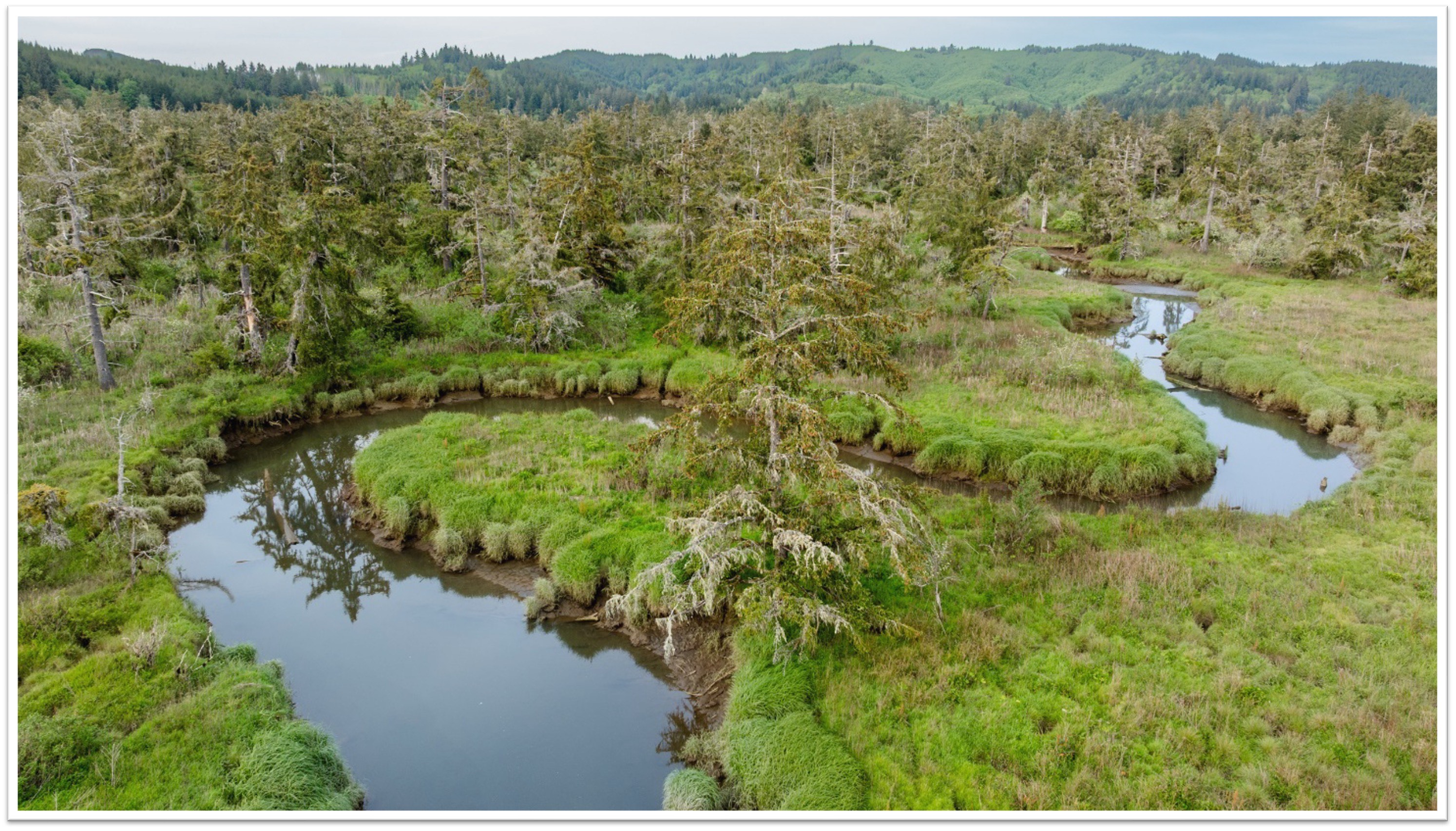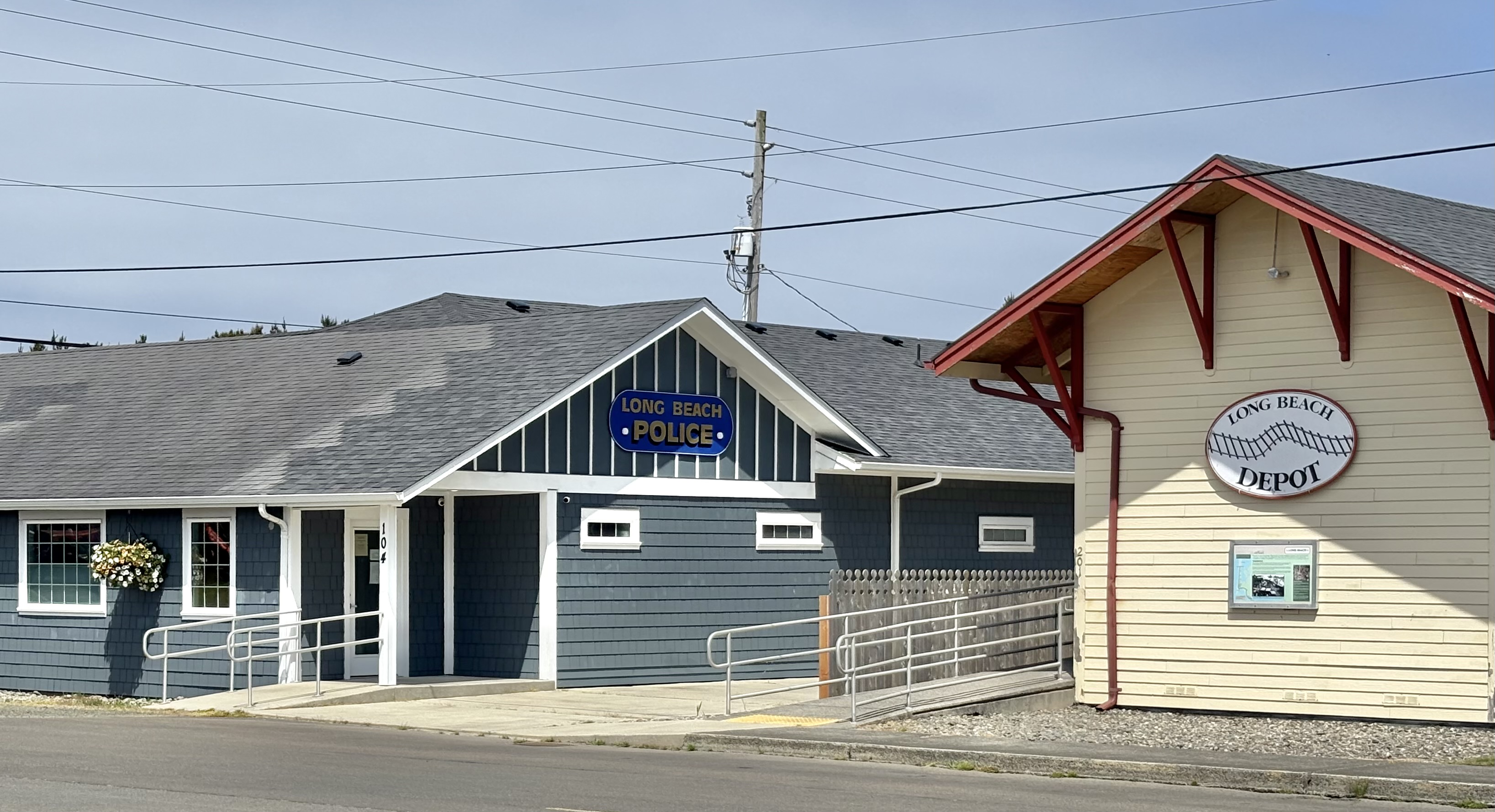Still has its wiggle: Chinook hatchery leaps back to life
Published 9:34 am Saturday, March 2, 2024

- Chinook Hatchery manager Pierce Holland details the on-going projects in the incubation room, including those involving native plants, algae and aquatic invertebrates. The goal is to better inform the community of their local environment.
CHINOOK — For the first time in 15 years, fish are swimming again at the Chinook Hatchery.
Around 300 rainbow trout were delivered from Naselle in late February, representing a major step in revitalizing the state’s oldest fish-rearing facility.
The local nonprofit Sea Resources has led the remodel, with a goal of modernizing the hatchery, first established in 1883, while restoring its role as a community environmental education center.
“These were used for salmon back when the students were here in the ’80s. The last class was in the ’90s,” said Sea Resources President Nansen Malin during a tour of the facilities.
More Information
Chinook Hatchery and Sea Resources history
In 1883, Alfred Houchen built the first Washington state salmon hatchery on the Chinook River at the request of Senate officials. The location is where Sea Resources, Inc. is today. Houchen and local fishermen experimented to see if they could transport fish from traps to the hatchery for artificial propagation. It was a complete success!
In 1935, fish traps were outlawed and the demise of The Chinook hatchery, dependent on the traps resulted. Hatcheries all over the state had been closed and Columbia River Fish runs continued to decline.
In the mid 1960s, reactivation of hatchers was seen as advantageous. A group of local citizens led by Ted Holway, a cannery and oyster grower, organized the community and sought a grant from Weyerhaeuser.
In 1968, Sea Resources, incorporated as a 501©3 nonprofit, formed an alliance with the local school district for vocational training and hatchery operations. The first classes were held in 1969.
While vocational classes are no longer in place, Sea Resources continues the proud tradition of salmon propagation and education with tours and programs that highlight salmon propagation methods, watershed restoration and native plants.
“The last time we had fish was in 2008. Our hope long term is to have trout and salmon here.”
Among the ambitious projects are new fish rearing tanks, including above-ground fiberglass tanks and a new trout pond for youth anglers.
“Our goal is to be a salmon hatchery, so it’s a start,” Malin said.
“Trout are in the salmonidae family and an important part of providing education and restoration efforts in the Lower Columbia River,”she continued. “There are about 200-300 trout, coming from the Naselle hatchery. The [larger] waiting pond will be for trout that we anticipate to be part of our juvenile-angling program. It is our future plan to open the larger pond to children for fishing a few times a year. This is a way to demonstrate that we have the ability to raise fish. Our goal is that these trout will eventually feed into places like Black Lake.”
The initial trout will serve an important role, though their stay may be short lived compared to future stock.
“These will likely get sampled, or killed and checked for diseases,” said Chinook Hatchery Manager Pierce Holland said.
“When we get a clean bill of health on that, next cycle they will give us jumbos [trout growing to the five to seven-pound range] for Black Lake. And then, presumably if we can do that successfully, then I see us being able to talk about salmon, in like two years. That’s the city on the hill we’re aiming for, getting back to salmon.”
Ilwaco’s Black Lake hosts an annual fishing derby for children, but has become a popular year-round place for fishermen of every age.
Why did the hatchery stop having fish?
As methods of raising salmon and hatchery construction and propagation evolved over the years, the Chinook Hatchery had been largely left in the past. Efforts lately have been to modernize the facility to today’s standards and techniques.
“Methods for propagating salmon had changed and focus was on the state hatchery environment … and they prefer now to use more natural techniques for propagation,” Malin said.
Flooding also plagued the hatchery in the past, resulting in mixed stock among native and hatchery fish and drawing ire from state fishery managers.
“The other reason is, every winter the river over-tops. If you think it’s squishy now, sometimes there’s four inches of water across the gravel. I can literally paddle the kayak around out here. When it’s really bad, the river over-tops and flows right across the old in-ground ponds … tame stuff was getting out into the wild, and the wild stuff was getting into the ponds. The WDFW said that was a nonstarter,” Holland said.
Despite the flooding, the hatchery has natural benefits, including a naturally fed water supply that stays relatively cold all year, ideal conditions for salmon and trout.
“With any kind of animal husbandry where you have them packed in this kind of density, disease is going to be a big issue,” Holland said.
“That’s actually one of the big advantages we have here is our water stays cold. For a lot of the diseases that cause the most problems for salmonidae, there’s a threshold of about 70 degrees in the water, if you get above that you start really seeing explosions. It’s a problem for some hatcheries on bigger, slower-flowing rivers. They’re constantly having to medicate their fish for outbreaks. But here, even in the middle of summer, the highest our water temperature gets is in the low-to-mid 60s. Right now it’s in the low 50s. The two advantages this hatchery has is that it’s all gravity fed — we don’t have to run pumps, which makes it a lot more affordable. And our water temperature stays cold year around. Those are the two big things we have going for us.”
The hatchery currently has a pump on site, installed in 2021 as part of the remodel.
“If we momentarily lose water pressure it kicks on and starts pulling water from the stream to supplement,” Holland said.
Educational center, trail and greenhouse
The on-going restoration at the hatchery also includes the nearby wetlands, Botanical Trail (to highlight Lewis and Clarke-identified plants), greenhouse (for habitat restoration and mitigation work), classroom and incubation room, with historical and salmon life cycle demonstrations on display.
“We want to be an educational center, for youth, adults and families. This is where a lot of vocation happened, this is the oldest salmon hatchery in the state. We want to talk about the legacy of the fishing and shellfish industry, particularly salmon. It’s also a community center with a sense of place, because the Chinook Nation had their tribal headquarters here until they moved to Bay Center,” Malin said.
“We also have the Botanical Trail, outdoor amphitheater and a greenhouse. We’re hopeful to do an educational component, not only with students but adults. We’re really hoping to bring all of that together to be more of a site, where people and families can come to learn about our environment.”
Still much work remains, and the non-profit, first established in 1969, is seeking volunteers to help and continue the hatchery legacy and bring the community center vision into fruition.
“We were rocking and rolling then covid struck and we lost a lot of volunteers,” Malin said.
“We’re looking for volunteers to help with daily stuff.” For more information or to get involved, visit chinookhatchery.com.





